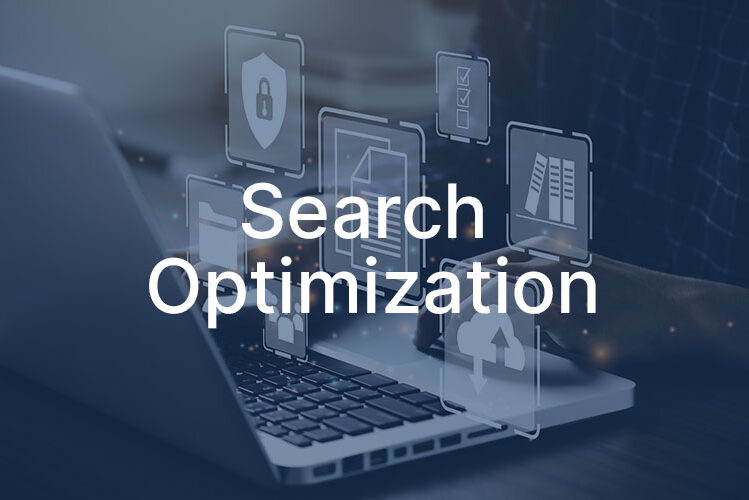Website Optimization: What Actually Moves the Needle for Small Businesses
Your website might look great, but is it actually working for your business? Website optimization isn’t about perfection—it’s about making strategic improvements that bring in more customers. Let’s focus on the changes that actually matter for small business success.
The Foundation: Content That Serves Your Customers
The biggest mistake businesses make is creating a beautiful five-page website and calling it done. Here’s the reality: businesses with 30-40 pages generate seven times more leads than those with just a handful of pages.
But don’t panic—this doesn’t mean you need 40 pages tomorrow. It means consistently adding valuable content that answers your customers’ questions. Every service you offer, every common question you answer, every project you showcase becomes an opportunity for customers to find you.
What counts as valuable content:
- Detailed service pages (not just a list, but explaining what’s included and why it matters)
- Answers to frequently asked questions
- Case studies or project showcases
- Location-specific pages if you serve multiple areas
- Educational content that helps customers make decisions
Search Engine Optimization: The Basics That Matter
According to Google’s SEO Starter Guide, the fundamentals haven’t changed: make your site useful for people, and search engines will follow. Here’s what actually impacts your rankings:
Page Titles and Descriptions
These are like your storefront window display—they determine whether people click through to your site. Every page needs a unique title that describes what’s on that page. Don’t start with your company name; lead with what customers are searching for.
Example:
- Poor: “Smith & Sons | Services”
- Better: “Commercial HVAC Repair in Sacramento | Smith & Sons”
Mobile Optimization Is Non-Negotiable
Google’s research shows that 53% of mobile users abandon sites that take longer than 3 seconds to load. With most searches now happening on mobile devices, your site must be fast and mobile-friendly. This isn’t optional—Google primarily uses mobile versions of websites for ranking and indexing.
Local SEO: Your Secret Weapon
For small businesses, local search is where you win. When someone searches “plumber near me” or “Sacramento accountant,” you want to appear. This requires:
- A complete Google Business Profile
- Consistent business information across the web
- Local content on your website
- Customer reviews
The Technical Stuff That Actually Matters
While you don’t need to understand the technical details, these elements significantly impact your success:
Site Speed
Every second of delay costs you customers. Google’s Core Web Vitals measure user experience, and site speed is a ranking factor. Compress images, use quality hosting, and remove unnecessary plugins.
Security (HTTPS)
That padlock in the browser bar isn’t just for e-commerce sites. Google marks non-secure sites as “Not Secure,” which scares away visitors. Every business website needs an SSL certificate.
Proper Redirects
If you’ve changed domain names or restructured your site, proper redirects ensure customers and search engines find the right pages. Without them, you lose traffic and rankings.
Building Authority Through Links
Other websites linking to yours is like getting professional recommendations—it builds credibility. But quality matters more than quantity. One link from your local Chamber of Commerce website is worth more than dozens from random directories.
How to earn quality links:
- Get listed in legitimate local directories
- Join business organizations that link to members
- Create content others want to reference
- Collaborate with complementary businesses
- Earn media coverage through community involvement
Measuring What Matters
You can’t improve what you don’t measure. Google Analytics (free) shows you:
- How many people visit your site
- Which pages they view
- How they found you
- What devices they use
- Where they’re located
- What actions they take
But don’t get lost in data. Focus on metrics that connect to business results:
- Phone calls from your website
- Contact form submissions
- Direction requests to your business
- Time spent on key pages
Common Optimization Mistakes to Avoid
Keyword Stuffing
Repeating keywords unnaturally doesn’t help—it hurts. Write for humans, not search engines.
Ignoring Page Load Speed
That beautiful slideshow might look impressive, but if it slows your site, it’s costing you customers.
Duplicate Content
Having the same content on multiple pages confuses search engines and dilutes your rankings.
Missing Alt Text on Images
Describing your images helps with accessibility and SEO. It’s also legally required for ADA compliance.
Neglecting Local Citations
Inconsistent business information across the web confuses both search engines and customers.
The Optimization Priority List
Feeling overwhelmed? Here’s where to start:
- Ensure mobile-friendliness – Use Google’s Mobile-Friendly Test
- Check site speed – Use Google’s PageSpeed Insights
- Verify SSL certificate – Look for the padlock in your browser
- Set up Google Analytics – Start measuring visitor behavior
- Claim your Google Business Profile – Critical for local visibility
- Add unique page titles and descriptions – For every single page
- Create a content plan – Commit to adding one valuable page monthly
The Reality Check
Perfect optimization doesn’t exist, and chasing every new SEO trend wastes time you could spend serving customers. Focus on the fundamentals: create valuable content, ensure a good user experience, and build genuine connections in your community.
The best optimization strategy is consistently improving your website to better serve your customers. Search engines reward sites that people find useful—it’s really that simple.
If you have web development questions, or are in need of having a website developed, please feel free to contact me at info@ecurtisdesigns.com.




